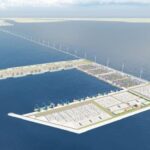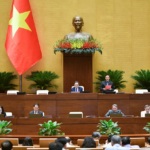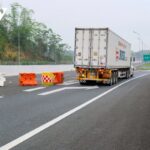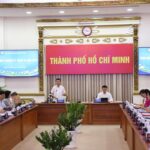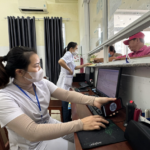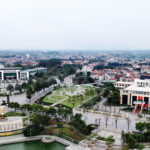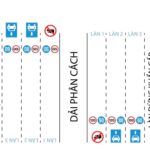Meeting the demand for transportation and creating a premise and motivation for socio-economic development
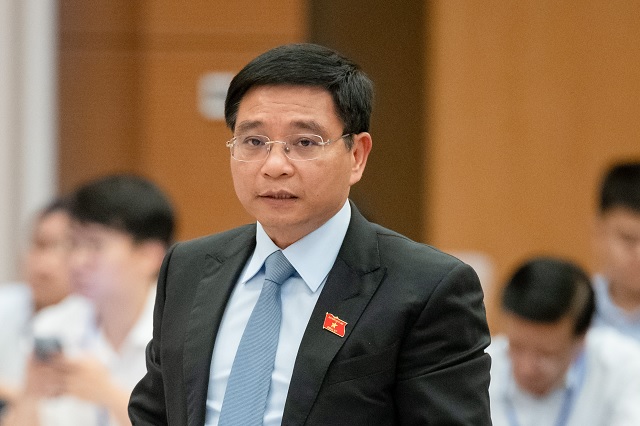 |
Presenting the Proposal on the investment policy for the high-speed North-South railway project, Minister of Transport Nguyen Van Thang stated that, in the past time, the Central Committee and the Politburo of the Communist Party of Vietnam have had many conclusions on the investment policy for the high-speed North-South railway project. At the 10th Conference of the 13th Party Central Committee, it was agreed to invest in the entire line with a speed of 350km/h and assign relevant agencies to complete the dossier for submission to the 15th National Assembly at its 8th session for consideration and decision on the investment policy, as well as some special mechanisms and policies to mobilize resources and investment procedures for the project.
Regarding the context of the project, the Minister of Transport said that the Pre-feasibility Study Report of the project has assessed the domestic and international context and the development of railway infrastructure, while also clarifying the reasons why the high-speed North-South railway line was not approved by the National Assembly in 2010 due to concerns about speed, exploitation methods, and investment resources in the context of a small-scale economy in 2010 (GDP was 147 billion USD; at that time, the total investment of the project was about 55.8 billion USD, equivalent to 38% of GDP), and high public debt (56.6% of GDP). With the increasing demand for transportation, the economy has grown to 430 billion USD in 2023, nearly three times that of 2010; public debt is at a low level of about 37% of GDP; and by the expected construction commencement in 2027, the economy is forecast to reach 564 billion USD, so investment resources are no longer a major obstacle.
Minister Nguyen Van Thang emphasized that the project’s goal is to build a high-speed railway line to meet transportation needs, contribute to restructuring the transport market share on the North-South corridor in an optimal and sustainable way, create a premise and motivation for socio-economic development, and ensure national defense and security.
The high-speed railway line will start in Hanoi City (Ngoc Hoi Station) and end in Ho Chi Minh City (Thu Thiem Station), passing through 20 provinces and cities, with a total length of about 1,541 km. In terms of investment scale, the project will involve the construction of a new double-track railway with a standard gauge of 1,435 mm, electrification, a design speed of 350 km/h, and an axle load of 22.5 tons; it will be used for passenger transport and can also serve national defense and security purposes, with the potential for freight transport if necessary.
The railway will use a distributed traction system for passenger trains and a centralized traction system for freight trains, with signaling and information technology equivalent to those used in countries operating high-speed railways worldwide. It is proposed to apply technical standards to ensure a design speed of 350km/h. The preliminary total land use requirement for the project is about 10,827 hectares, and the number of people to be resettled is about 120,836.
The proposing agency suggested that the investment form for the project be public investment, and the division of the project into sub-projects will be implemented when the investment project is approved. The preliminary total investment for the project is estimated at VND 1,713,548 billion (approximately USD 67.34 billion).
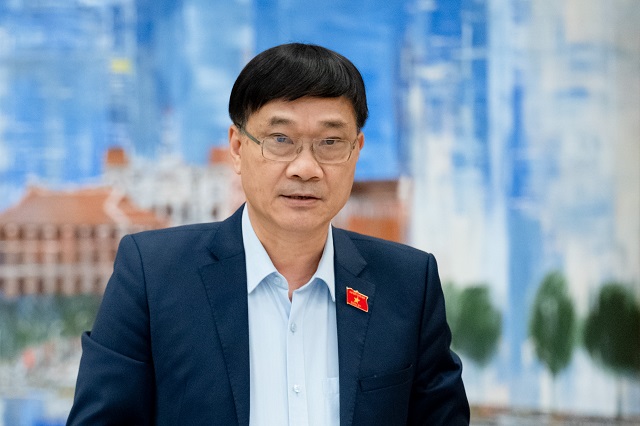 |
Accurately assessing the financial effectiveness of the project
Verifying the content, Mr. Vu Hong Thanh, Chairman of the Economic Committee, said that the project met the criteria for important national projects and basically satisfied the requirements for the project dossier as prescribed in the Law on Public Investment. Some opinions suggested supplementing the dossier with a proposal for converting forest land to other purposes.
Regarding the necessity of the project, the Economic Committee agreed on the necessity of investing in the project with the main political, legal, and other bases as stated in Report No. 685/TTr-CP.
Concerning the scope and scale of investment and the preliminary design, some opinions suggested supplementing and explaining the comparative options to clarify the basis for selecting the project’s route as proposed by the Government and ensuring that the route is as straight as possible, especially the section passing through Nam Dinh province, to ensure the project’s effectiveness. In addition, the passenger stations in some localities are not located in the central areas, while, to ensure maximum efficiency, the stations must be conveniently located to attract the most passengers. Therefore, it is necessary to clarify the selection of station locations for the project.
At the same time, the connectivity of the high-speed railway line with the national railway network, urban railways, and other transport systems, as well as its linkage with the regional and international railway networks, should be clarified.
Regarding the socio-economic and financial efficiency of the project, some opinions suggested clarifying the bases for calculating the transport demand forecast for the project, as there have been significant discrepancies between the actual transport demand and the forecast demand for many transport infrastructure projects in the past, leading to ineffectiveness in financial plans and the need to adjust project contracts. In addition, according to the Verification Report of the State Appraisal Council, the revenue and revenue growth forecasts are considered high and carry potential risks. Therefore, it is necessary to carefully review and accurately assess the financial effectiveness of the project and the possibility of the state budget having to subsidize transport business operations in the future.
Moreover, as the project will be put into operation with advantages in terms of time, ticket prices, and other benefits that this mode of transport offers, it will significantly affect the efficiency of short-haul flights, thereby impacting the future development of airports. Therefore, Mr. Vu Hong Thanh suggested clarifying and supplementing this aspect. In addition, according to the Proposal, the existing railway line will continue to be upgraded and renovated for freight transport and short-haul tourist services and will be implemented under a separate project. However, it is unclear about the efficiency, timing, and schedule for upgrading the existing railway line. Therefore, it is necessary to consider a comprehensive assessment of investing in the completion of both railway systems to have a basis for making appropriate investment decisions.
Regarding the capital source for the project, Mr. Vu Hong Thanh said that compared to the total medium-term investment capital from the central government budget, the preliminary total investment of the project exceeds (by 14%) the maximum total medium-term public investment capital from the central government budget for the 2021-2025 period (VND 1,500,000 billion, including reserves) and accounts for 59.7% of the total medium-term public investment capital from the state budget for the 2021-2025 period. In the 2026-2030 period, investment capital needs to prioritize continuing to invest in important projects and programs. With such a large capital requirement for the project, it is necessary to synchronously implement many solutions to mobilize resources, increase state budget revenue, and reduce regular expenditures (including expenditures for national defense and security) and may have to accept an increase in budget overspending in some years (which leads to risks in borrowing needs, mobilization capacity, and repayment obligations in the future). Therefore, careful consideration is required.
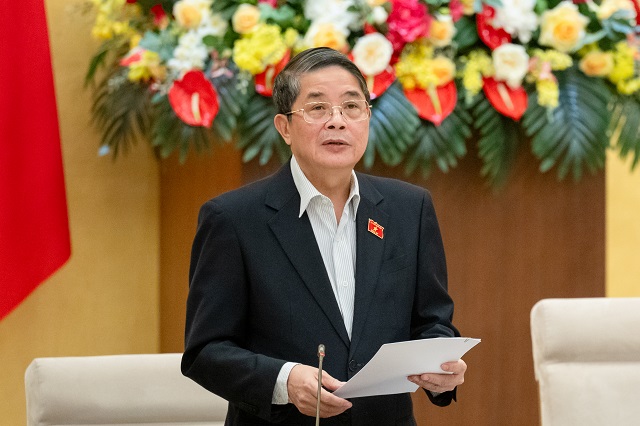 |
Controlling risks and ensuring financial and budgetary autonomy
At the meeting, the members of the National Assembly Standing Committee agreed to submit the investment policy for the high-speed North-South railway project to the National Assembly for consideration.
Concluding on this content, Mr. Nguyen Duc Hai, Vice Chairman of the National Assembly, said that this project has an unprecedented scale in Vietnam, with no precedent for implementation, and has been opined by competent authorities. This project also has a significant impact on many aspects of the economy, society, finance, and public debt in a context where Vietnam does not yet have the technology, human resources, or capital for it.
Given the current state budget situation, where the project’s investment capital will mainly depend on borrowed capital, the Vice Chairman of the National Assembly requested that the Government continue to review and refine the project dossier, taking into account the opinions of the National Assembly Standing Committee and the Verification Agency. It is necessary to further review and calculate the preliminary total investment and preliminary design to ensure economy and efficiency, supplement explanations for comparative options to clarify the basis for selecting the project’s route as proposed by the Government, and assess the area of rice and forest land to be converted, as well as solutions to ensure the rice and forest coverage ratios decided by the competent authorities.
Along with that, the Vice Chairman of the National Assembly suggested assessing the impact of the project on the environment, studying the arrangement of the number of stations, and considering factors that may affect the project’s progress to strive for the completion of the entire line by 2035. Attention should also be paid to land recovery, compensation, and resettlement support, the selection of investors, the provision of technology and human resources, material supply, and electricity demand during the construction and operation of the project.
Regarding the capital source for the project, the total investment capital is very large, including both construction costs and operation and exploitation costs. Therefore, to ensure feasibility and the country’s financial security, it is necessary to carefully evaluate and consider the implementation of many other urgent and necessary infrastructure projects in the fields of transport and energy, with solutions to control risks, especially the risk of not completing and putting the project into use due to a lack of capital, the risk of budget imbalance in the medium term when large debts become due, and the risk of excessive dependence on foreign loans, affecting the country’s financial and budgetary autonomy.
The Vice Chairman of the National Assembly agreed on the need for outstanding policies to implement the project but suggested that the Government review and refine the 19 proposed policies, thoroughly assess their impacts, and only include in the resolution those policies that are truly necessary and have minimal negative impacts. It is essential to ensure a mechanism for coordinating and controlling power among agencies and units and a mechanism for inspection and supervision to prevent wastefulness, extravagance, and negative phenomena. Attention should also be paid to the policies that the verifying agency suggested not including or carefully assessing their impacts before making a decision.
At the same time, the Vice Chairman of the National Assembly suggested reviewing and completing relevant standards and norms to ensure uniformity and consistency in implementation. It is necessary to calculate and clarify technology transfer, ensuring the mastery of railway technology and raw materials, and the conditions for construction and operation, as well as prioritizing the development of auxiliary industries and the railway industry. The basis for calculating and forecasting the transport demand of the project should be clarified, and the socio-economic and financial efficiency of the project should be further assessed. Careful consideration should be given to the opinions of the verifying agency to complete the project dossier and the draft resolution on the consistency with relevant plans and schemes.
The National Assembly Standing Committee requested that the Government continue to review and refine the project dossier and the draft resolution on the investment policy for the high-speed North-South railway project to submit to the National Assembly, and the Economic Committee should complete the verification report to submit to the National Assembly for consideration.
Source: Nhat Quang
Breakthrough: From an Agricultural Province to an Industrial Powerhouse, Leading the Nation in Foreign Investment
This province, despite being the smallest in Vietnam, boasts an impressive array of top-ranking indicators in the country as of now.
Unleashing Solutions to Fast-Track Investment in Transport PPP Projects
Experts and National Assembly delegates emphasize the importance of resolving lingering issues in completed transport PPP projects. This decisive action will foster trust and motivate investors and banks to engage in future endeavors.




























